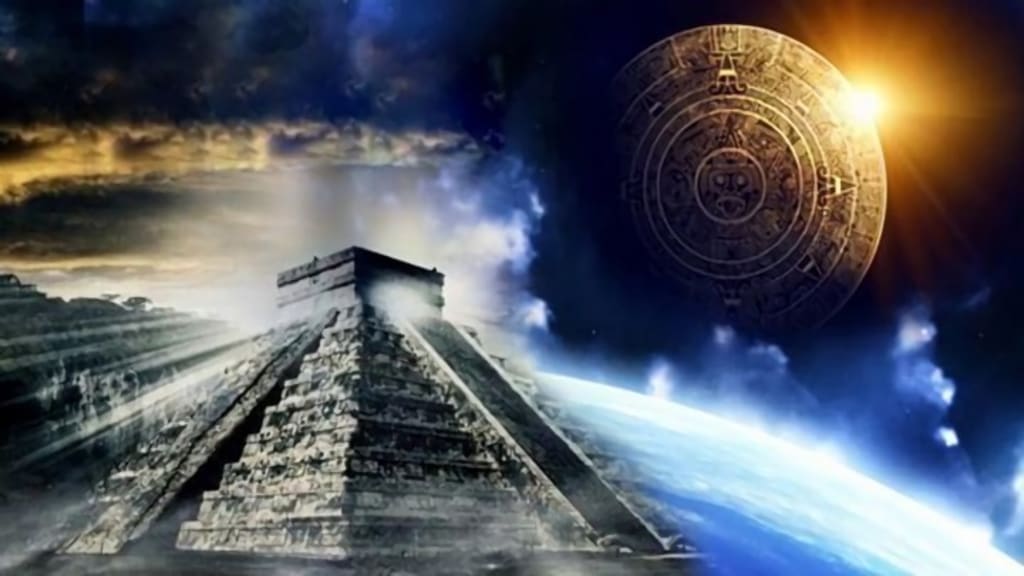A new study suggests the number 20 calendar was in use as early as 3,400 years ago
The number 20 calendar was in use 3,400 years ago

Neo-Ancient Olmec and Mayan ruins discovered by University of Arizona archaeologists in southern Mexico and western Guatemala suggest that the famous number 20 calendar was in use as early as 3,400 years ago.
University of Arizona archaeologist Takeshi Inomata and colleagues have discovered 478 separate new ancient Olmec and Mayan sites in southern Mexico and western Guatemala using a lidar remote sensing technique that stands for "light detection and ranging."
Here, they found that people may have established the concept of calendar time in the city center at that time, and used the number 20 as the basic unit for writing calendars in the future. The study was then published Oct. 25 in the journal Nature Human Behaviour.
Lidar Remote Sensing Technology Lidar technology is a new remote sensing technology with high precision and high efficiency. At present, there are nearly 20 sets of Lidar technology systems in China. Because lidar involves sending laser beams from a drone or plane to the ground, these targeted pulses of light actually allow researchers to strip away vegetation to see the shape of the ground, allowing accurate measurements of the terrain, Inomata said. , so he was a particularly valuable tool in Central America.
This is especially useful in Inomata's study, because the population centers the researchers are looking for, and while many appear to be based on prototype cities built around 1400 BC, there are still many complexes that have never been discovered until now , surveyed or excavated. Although they were large, they were mostly horizontal in size, and many of them are now low mounds that may be only a few feet tall. The larger plaza also only ranges from 0.6 miles to nearly a mile long, so this is difficult to see from the ground. Using these lidar images, they finally found an Olmec site, San Lorenzo, which peaked between 1400 and 1150 BC, and an Olmec site that occupied mainly between 1000 BC and 800 BC. The Mayan ruins of Guadafenix. Most of the sites found by Inomata and his colleagues are older than that. Although the exact date is not known, the oldest of these sites dates back to 1000 BC, and the most recent site may have been built before 250 AD, a date that coincides with the beginning of the Mayan Classical period and the Mayan The pinnacle of civilization.
It was found that these sites have something in common, most of them have a similar layout, a large square is surrounded by a large rectangular platform at one end, and 20 smaller platforms are arranged on the east and west sides. Twenty appears to be a significant number, Inomata said, which may indicate that the builders of these structures were already using a base-20 counting system. University of Arizona archaeologist Takeshi Inomata said: "While the written calendar is centuries behind the website, it's a tantalizing sign that people actually had a number-20-based calendar system. The study area includes the Mayan region and the area inhabited by the early Olmec people, who built huge stones and pyramids over 100 feet, or 30 meters high. And they seem to have designed their cities around an early iteration of the Mayan calendar at the time.
In this part of Central America, the day the sun passes directly overhead is May 9 or May 10, Inomata said. The population center is also often lined with a similar 20 rectangular platform pattern square to arrange the sunrise of the day associated with the zenith passage, in order to capture the sunrise on certain important days. At these locations people don't catch the sunrise that day, but they do align with the sunrise 40 or 60 days before the pass, which is a multiple of 20. This suggests that the architects are counting down to the Zenith Passage and may have established the concept of calendar time in their city centres. It also shows that many people are oriented to the sunrise on certain important days and use the number 20 as the basic unit for writing calendars in the future.
Archaeologists believe that the large square in the middle of these population centers was used for religious ceremonies, so they may have used an earlier version of the Tzolkien. Before these sites were built, the Mayan calendar didn't seem to be a very important calendar. The new study also paints a more complete picture of how Mesoamerican civilization developed. But the lush vegetation means archaeological work can be difficult, with many mounds of hidden structures and artifacts integrated into the landscape.
Because of this uneven partial archaeological record, little is known about how the Olmec and Maya civilizations interacted. Subsequent work Previously, the researchers conducted their own surveys of the eastern Mexican state of Tabasco, where they discovered a huge site called Agua da Fenix. Between 33 and 50 feet tall and 0.9 miles long, Aguada Fenix is a Mayan site of artificial plateaus. Used between 1000 BC and 800 BC, earlier than the researchers expected to start large-scale construction projects. After discovering the site, the team hopes to expand their search, Inomata said. So they combed through public lidar data in southern Mexico and western Guatemala to discover these hundreds of new sites.
The layout of these sites suggests that people in the area are building old ideas and influencing each other. This influence may come from the earliest large site, San Lorenzo, built by the Olmecs in what is now the Mexican state of Veracruz. San Lorenzo reached its peak between 1400 BC and 1150 BC with a strict social stratification, with elite dwellings situated on a large plateau with humble dwellings flanking the terraces of the plateau. One question is whether the Olmec influenced the Maya, or whether the Maya developed largely independently, Inomata said. Another question is how social hierarchies play an organizational role in urban centers.
It was once thought that society would become more organized and hierarchical, and then settle in one place to build complex towns. But, Inomata said, new research shows that the Maya developed a change in themes between 1,000 B.C. and 350 B.C., and that many of the early builders of these population centers were hunters, gatherers, and farmers, and the The raised plaza has a pyramid or square building on one side and a long platform on the other. They may move seasonally or every few years, and they appear to be in a society without Olmec social stratification. Agua da Fenix may have been a ceremonial meeting place for the Maya at the time, and people were already living in a classless, mobile society when Agua da Fenix was built.
"It's not a society ruled by a king, but this big project by people coming together," Inamata said. The researchers believe this is in stark contrast to the nearby Olmecs, who were likely ruled by kings and who had a strong social hierarchy. Nonetheless, both groups appear to have built similar population centers around 1000 BC. "Now, we have a better understanding of these sites and their distribution, so we're really going to rethink what's going on in the interim," Inomata said. But there are still many questions about the annual performance of development, many of which still need to be unearthed in order to answer them. But the study area covers a whopping 32,632 square miles, which should keep archaeologists busy.
About the Creator
sayre laylah
Tired of monotonous climbing moves, but every step is close to the top
Enjoyed the story? Support the Creator.
Subscribe for free to receive all their stories in your feed. You could also pledge your support or give them a one-off tip, letting them know you appreciate their work.






Comments
There are no comments for this story
Be the first to respond and start the conversation.